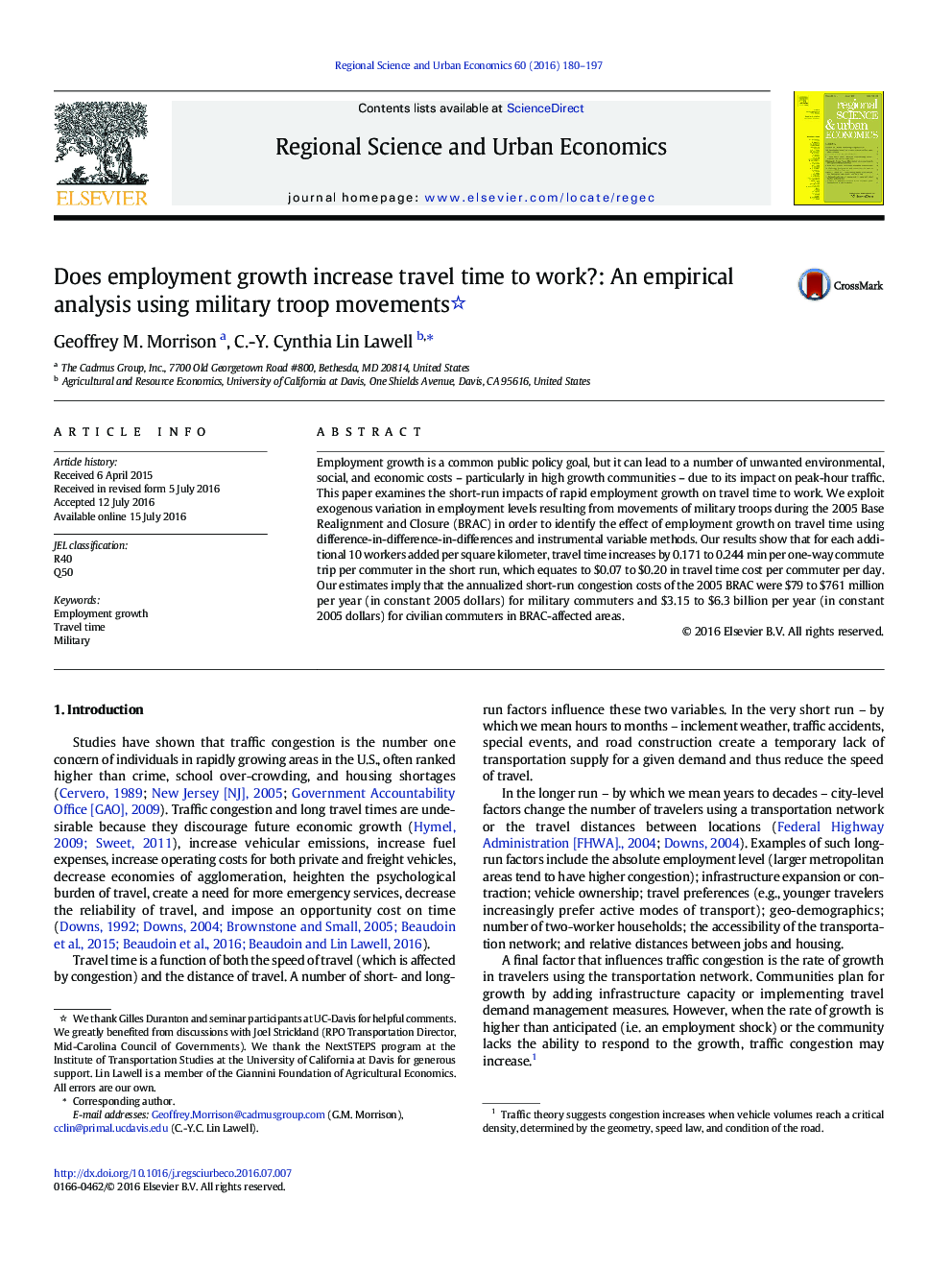| کد مقاله | کد نشریه | سال انتشار | مقاله انگلیسی | نسخه تمام متن |
|---|---|---|---|---|
| 983638 | 1480534 | 2016 | 18 صفحه PDF | دانلود رایگان |
• We examine the short-run impacts of rapid employment growth on travel time to work.
• We exploit exogenous variation in employment levels from the 2005 BRAC.
• We use DDD and IV methods.
• Adding 10 workers/km2 costs a commuter $0.07 to $0.20 per day in travel time costs.
• The 2005 BRAC cost civilian commuters $3.15 to $6.3 billion per year.
Employment growth is a common public policy goal, but it can lead to a number of unwanted environmental, social, and economic costs – particularly in high growth communities – due to its impact on peak-hour traffic. This paper examines the short-run impacts of rapid employment growth on travel time to work. We exploit exogenous variation in employment levels resulting from movements of military troops during the 2005 Base Realignment and Closure (BRAC) in order to identify the effect of employment growth on travel time using difference-in-difference-in-differences and instrumental variable methods. Our results show that for each additional 10 workers added per square kilometer, travel time increases by 0.171 to 0.244 min per one-way commute trip per commuter in the short run, which equates to $0.07 to $0.20 in travel time cost per commuter per day. Our estimates imply that the annualized short-run congestion costs of the 2005 BRAC were $79 to $761 million per year (in constant 2005 dollars) for military commuters and $3.15 to $6.3 billion per year (in constant 2005 dollars) for civilian commuters in BRAC-affected areas.
Journal: Regional Science and Urban Economics - Volume 60, September 2016, Pages 180–197
